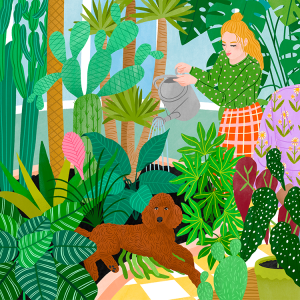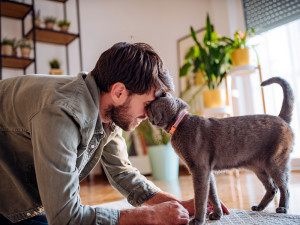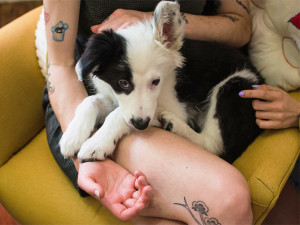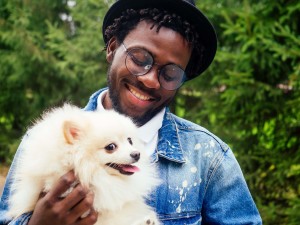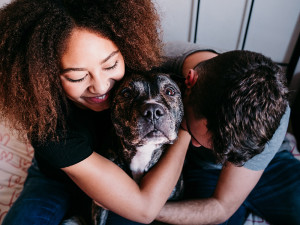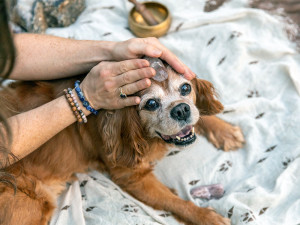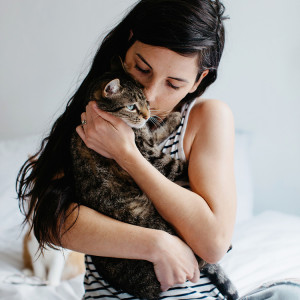Does Your Attachment Style Affect How You Are as a Pet Parent?
You know you’ve wondered this...
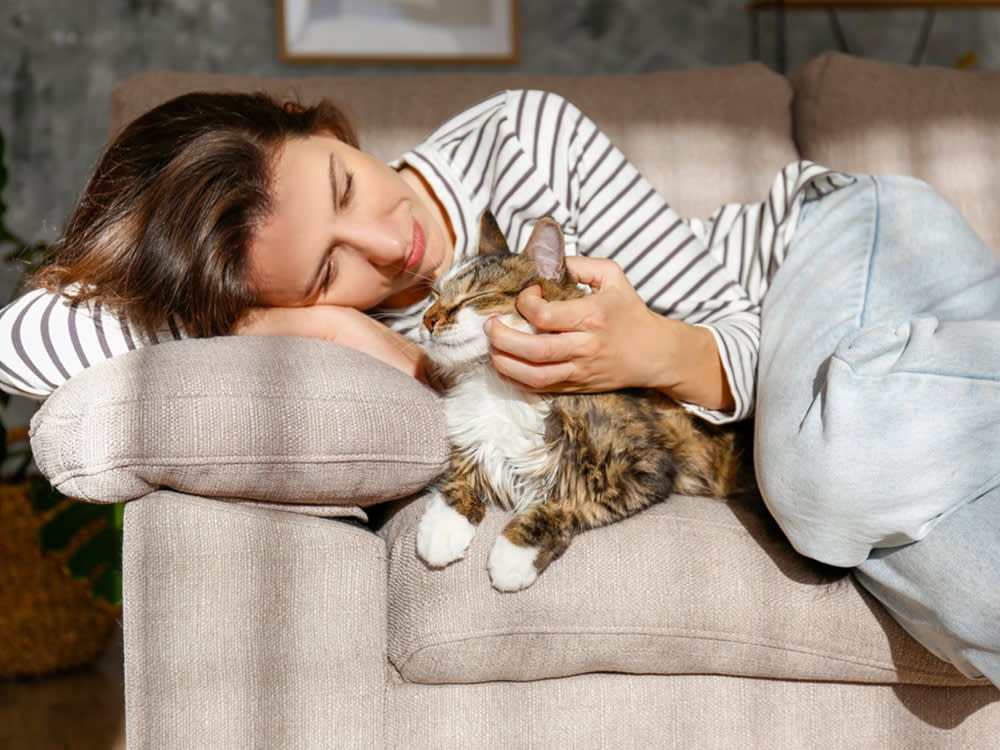
share article
Attachment theory has become a hot topic in recent years, particularly among those of us who simply cannot pass up an online self-assessment or personality quiz. (The Ravenclaws, if you will, or the INFPs.) It’s possible that you already know your attachment style — whether you’re secure, anxious, avoidant-dismissive, or disorganized. But how does your attachment style relate to your role as a pet parent, and does your pet have one of their own?
If you’ve wondered, you’re in luck; there has actually been a good amount of research done on the topic of attachment-style among pet parents and their pets. Here’s what the findings say.
What is attachment theory?
First, let’s go over attachment theory. Initially developed in the 1950s by psychologist John Bowlby (and later elaborated on by psychologist Mary Ainsworth), attachment theory suggests that early experiences with caregivers shape a person’s behavior in their relationships, both romantic and platonic.
Typically, attachment theory is discussed in terms of four distinct stylesopens in a new tab that exist on a spectrum and can changeopens in a new tab throughout your life. To sum it up, people with a “secure” attachment style are more likely to be trusting and emotionally available in relationships.
Then there are the three that fall under the “insecure” category: People with an “anxious” attachment style are more likely to fear abandonment and need reassurance; people with an “avoidant-dismissive” attachment style may be emotionally guarded and prioritize independence over connection; people with a “disorganized” attachment style are more likely to display unpredictable behavior, meaning they might seek out love but push it away once they receive it.
What does your attachment style say about your role as a pet parent?
A 2022 study suggestsopens in a new tab that those with insecure attachment styles (anxious, avoidant-dismissive, disorganized) tend to have strong bonds with their pets. So, does that mean you have one of those insecure attachment styles just because you love your pet so much you can’t look at them without wanting to shout, “I love you!”? Not necessarily.
For the study, lead author Johanna Lass‑Hennemann and her co-authors conducted an online survey of 610 German dog parents, almost all of whom were women, asking them to complete an assessment gauging the intensity of attachment to their dogs, an assessment of their interpersonal attachment style, and a request for relevant mental health information.
The study found that participants who were most attached to their dogs had a greater tendency to have an insecure attachment style with humans — they found them less trustworthy and had a greater fear of being rejected by them. These participants also reported more symptoms of mental health distress.
This could mean that because these participants found it difficult to maintain relationships with people, they instead turned to non-human animals — who are non-judgmental and non-threatening — to fulfill those emotional needs. But it’s important to note that the results only show correlation, meaning your pets aren’t causing your attachment style to be insecure.
“Thus, from a developmental perspective the link between an insecure attachment to humans and stronger emotional attachment to pets might reflect a compensatory attachment strategy for people who were not able to establish secure relationships to other people during childhood,” the authors writeopens in a new tab. “Those people may build more close relationships with pets that might be perceived as more reliable and less threatening.”
Well, what can we say — sometimes it’s just nicer to hang out with our dogs.
Can attachment style influence whether you’re a dog or a cat person?
While numerous online quizzes might be able to tell you whether you’re a dog person or a cat person, research hasn’t yet been able to prove that your attachment style can do the same. One 2015 studyopens in a new tab came the closest: It measured its participants’ affection for their petsopens in a new tab alongside their “Big 5” personality traits. The study also took into account their score on the Pet Attachment Questionnaireopens in a new tab, which measures “anxious attachment” and “avoidant attachment.”
Their results found that people with the highest anxious attachment scores (those who need more proximity and reassurance) tended to be younger people who preferred cats. But both “dog people” and “cat people” tended to have low avoidant attachment (guarded and preferring independence) scores, meaning they all preferred to have close relationships with their pets. Aww.
Can our parenting affect our dogs’ attachment styles?
I hope this doesn’t stress you out, but yes. One 2022 study from researchers Lauren Brubaker and Monique Udell at Oregon State University found that parenting style can predict dog behavior and cognitionopens in a new tab.
In the study, Brubaker and Udell surveyed parentsopens in a new tab on their expectations for their dogs, and how they typically respond to their dogs’ needs. The results put the parents into three groups already used in the study of human children and their parents: “authoritative” (high expectations, high responsiveness toward needs), “authoritarian” (high expectations, low responsiveness), and “permissive” (low expectations, low responsiveness).
Dogs with authoritative parents were most likely to have secure attachment styles — they responded to social cues, sought to be close to their caregiver more than an unfamiliar person, and persistently tried to solve a puzzle. Dogs with authoritarian parents were more insecurely attached; they spent even more time with their parents than an unfamiliar person, and had less success with the puzzle. And dogs with permissive parents were more responsive to the social cues of strangers and had no success with the puzzle.
“Authoritative parenting, having high expectations while also being responsive to your dog’s needs can lead to measurable positive outcomes including increased feelings of security, stress reliance, and problem solving persistence in dogs,” Udell said in a February interview with usopens in a new tab.
Can our attachment style affect our dogs’ separation anxiety?
Another study, published in opens in a new tab and conducted via an online survey of 1,508 people from Germany and Hungary, sought to find out whether separation anxiety in dogs opens in a new tabcorrelated with a certain attachment style in their pet parent.
The study presented participants with a questionnaire about their dogs’ separation behavior and assessments to determine their “Big 5” score and attachment style. The researchers found that pet parents with an avoidant attachment style (those who prioritize independence and are likely to be emotionally guarded) reported a higher occurrence of separation anxiety in their dogs.
The study didn’t go into why this might be, but the authors hypothesized that guardians with an avoidant attachment style might be less responsive to a dog’s needs and less inclined to give them a feeling of security when they need it. Because of that parenting approach (again, they hypothesize), the dog may develop an insecure attachment style, as well as separation anxiety.
What about our cats — do they demonstrate different attachment styles based on our parenting?
Once again, yes. Researchers from Oregon State University, the same place that gave us our dog-attachment-style research, have also studied attachment style in cats and kittensopens in a new tab, and whether that style can change with training and socialization.
The researchers used a test style similar to the kind used to study attachment behavior in infants and dogs. Cats spent two minutes in a new room with their caregiver, followed by two minutes alone, and then two minutes together again.
When the caregiver returned, cats with secure attachment demonstrated reduced stress levels and divided their attention between the caregiver and their surroundings, often continuing to explore the room.
Cats with insecure attachment exhibited signs of distress, such as tail-twitching and lip-licking. They either stayed away from the caregiver — an avoidance behavior — or displayed ambivalence by jumping onto their lap and remaining still.
Of the 70 kittens studied, 64.3 percent were categorized as securely attached, and 35.7 percent were categorized as insecurely attached. There were no major changes to these results after six weeks of socialization training. Of the 38 cats studied, 65.8 percent were secure and 34.2 percent were insecure. These results mirror both the results in the kitten study, and the human infant population, where 65 percent of infants are securely attached to their caregiver.
“Once an attachment style has been established between the cat and its caregiver, it appears to remain relatively stable over time,” the study’s lead author Kristyn Vitale said in a press releaseopens in a new tab. “Even after a training and socialization intervention.”
And just remember, your pet has no idea what an attachment style is. They just know you’re the person with the food and endless cuddles. Your therapist, however, might be judging you. Just kidding.
References:
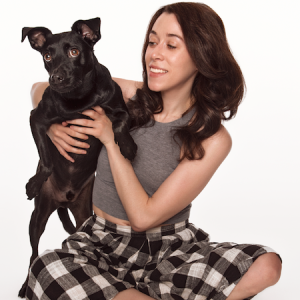
Kelly Conaboy
Kelly Conaboy is a writer and author whose work has been featured in New York Magazine, The New York Times, and The Atlantic. Her first book, The Particulars of Peter, is about her very particular dog, Peter. (Peter works primarily as a poet.)
Related articles
![Man hugging his fluffy white dog happily]() opens in a new tab
opens in a new tabChemistry Between People and Dogs Is Real (It’s Science)
How the “love hormone” oxytocin connects us with our pups.
![Couple hugs their merle Boxer]() opens in a new tab
opens in a new tabHow to Improve Your Relationship with Your Dog
Animal behaviorist Dr. Karen B. London on how to strengthen your pet-parent bond.
![Healing stone on Cavalier spaniel dog.]() opens in a new tab
opens in a new tab7 Human Wellness Trends Making Their Way Into the Pet Space
Your pet can benefit from your self-care practices, from CBD to acupuncture. (Yep, you read that right.)
![dark-haired woman hugging cat that has imprinted on her]() opens in a new tab
opens in a new tab10 Signs Your Cat Has Imprinted on You
Feeling like you have a little shadow these days? Here’s why that’s happening.
![White and light brown cat laying down with eyes almost closed]() opens in a new tab
opens in a new tabStudy Says “Slow Blinking” at Your Cat Helps You Bond
A team of psychologists at the Universities of Sussex and Portsmouth have discovered the key to building a bond with cats.
